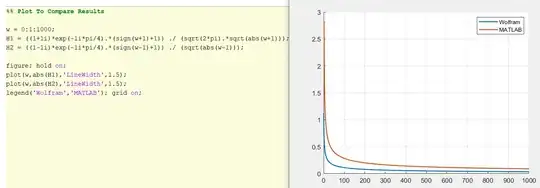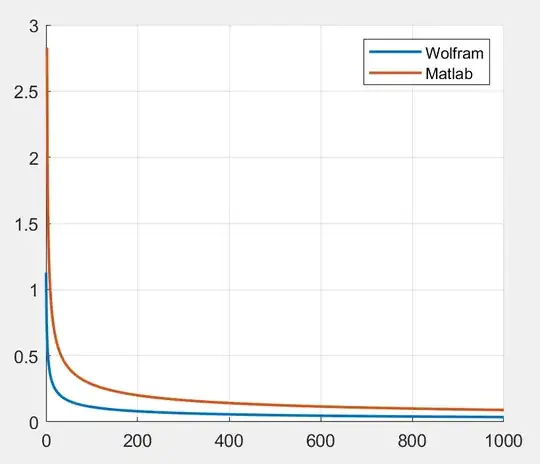I read in a book chapter by U. Frisch (Wave Propagation in Random Media) which states the 3D free space Green's function in the spatial domain as:
$$G(r,r')=\frac{\exp\big(ik(r-r')\big)}{-4\pi(r-r')}$$ And in the frequency domain (after Fourier Transform) as:
$$G(k)=({k_0}^2-k^2)^{-1}$$ I am trying to do the same operation with the 2D Green's Function which contains a Hankel operator to obtain a formulation in the frequency domain:
$$G_{2\mathrm D}(r)=\frac{i}{4}H_{0}^{(1)}(k_0r)$$ Something I have tried is to obtain a simplified formulation of the Green's function from https://dlmf.nist.gov/10.2 (equation 10.2.5):
$$H^{(1)}_{\nu}(z)\sim\sqrt{2/(\pi z)}~\mathrm{e}^{\mathrm i\left(z-\frac{1}{2}\nu \pi-\frac{1}{4}\pi\right)}$$ Then, I tried doing the Fourier transform operation for this simplified Hankel function, but to no avail as integration by parts does not converge to a solution due to the sqrt(1/z) term.
Does anyone have any suggestions on how I can Fourier Transform the 2D Green's function? Thank you.
EDIT: Eldar has suggested the use of a computational approach to obtain the result. We observe a discrepancy when using MATLAB and Wolfram to do the analysis and that is most likely due to the convention used between the 2 softwares in the Fourier Transform operation.


